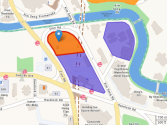What you should know about lifting the offshore conversion cap
By Nathan Chow Hung Lai (周洪禮)The People’s Bank of China (PBoC) is likely to lift the RMB 20,000 daily limit on currency conversion for Hong Kong residents, according to the Hong Kong Monetary Authority’s chief executive Norman Chan. As we have long argued, the removal of the conversion cap is crucial to further facilitate the growth of the Hong Kong’s offshore RMB market (see “It’s time to review the personal conversion quota” 3 Apr 2012, and “How will HK maintain its RMB edge?” 25 Oct 2012).
RMB wealth management product to develop
Hitherto, almost all investment products/channels such as RMB FDI (foreign direct investment) and RQFII (RMB qualified foreign institutional investors) schemes require repatriation of RMB back to the mainland from Hong Kong. Such backflow of RMB liquidity constraints the offshore pool to grow thereby hindering market development from a longer term perspective.
A “self-sustaining” cycle is thus needed in the offshore market. However, little development has been seen on this front.
For instance, only two companies have listed RMB shares in the Hong Kong Stock Exchange so far (Hui Xian REIT and Hopewell Infr-r). The demand for RMB-denominated structured products such as RMB equity-linked note (ELN) and equity-linked deposit (ELD) has been muted.
Investors are put off by the prospect of receiving HKD-denominated shares if the ELN or ELD are exercised. When this occurs, their currency exposure will automatically be switched from RMB to HKD.
If investors want to maintain their RMB positions, they have to sell the shares and go through the slow process of buying RMB 20, 000 per day until the full notional amount is re-converted. This is unattractive since most investors hold RMB in anticipation of appreciation.
As such, these products will only become more popular when the daily personal conversion quota is relaxed.
Scraping the Shanghai conversion window
It was reckoned that lifting the conversion cap would pose an impact on the onshore market as individuals from Hong Kong convert currency via the Shanghai conversion window. The HKMA thus proposed an alternative that allows individuals to use the offshore price for conversion.
In other words, any retail purchases of CNH would need to be sourced within the offshore RMB pool. Some therefore concern that it would stall the growth of CNH deposit pool.
Yet, the conversion transaction is only the first-order effect of the regulation change. To better understand the total impact, the subsequent cross-border trades triggered is also needed to be taken into account. The full impact is illustrated below.
Suppose an exogenous event fuels expectation for a strengthening RMB; offshore investors hence demand more CNH in attempting to expand their RMB position. Given the fixed stock of offshore pool, CNH will be traded stronger against the USD than its onshore CNY counterpart.
The wider CNH-CNY spread (CNH premium) incentivizes importers in China to transfer onshore RMB funds to Hong Kong and settle trades offshore. The larger the CNH-CNY spread, the higher the incentive for importers to conduct such cross-border settlement.
More funds will flow into CNH deposits consequently. Meanwhile, the onshore exporter has exactly the opposite incentive.
Given the CNH premium, the exporters would rather receive USD from their customers and sell the USD for CNY onshore. Such imbalance on CNH settlement will lead to a net rise in the offshore RMB stock.
Offshore RMB liquidity pool to grow gradually
But one also needs not to worry the offshore RMB liquidity might experience an over-rapid growth for the following reasons. First, the aforementioned process of selling CNH for USD offshore will gradually contract the CNH-CNY spread.
This automatic stabilizing effect has indeed been keeping the CNH-CNY spread at a very modest level. The USDCNH has YTD on average traded at mere 55pips below the USDCNY; from as high as 400pips in 2010.
Moreover, the process can be reversed if anticipations swing to the other end of the spectrum -- RMB depreciation. For instance, the CNH depreciated against the USD significantly in September 2011 owing to a general weakening of AxJ currencies caused by the intensification of the euro crisis.
As PBoC maintained the CNY largely stable, the CNH-CNY spread reversed in mid-Sep and reached a discount of almost 2%. The CNH discount caused Chinese importers to buy USD onshore.
Exporters preferred to settle in CNH and then transferred the funds back to the mainland. The stock of CNH deposits thus fell momentarily as a result of such RMB outflow.
In brief, the flow of settlement is endogenous to the CNH-CNY spread. A wider spread triggers an increase in CNH stock as onshore importers have a greater incentive to settle trades in Hong Kong.
The stock expansion then gradually narrows the spread as the increased demand for the stock is satisfied. And the whole process can be reversed if expectation of RMB appreciation fades.
Such reversal is expected to occur more frequently going forward given an increasingly two-way fluctuation in the RMB value. This, coupled with the ongoing expansion of repatriation channels (i.e. dim sum bond, RQFII and RMB FDI), implies that the stock of CNH deposits will likely to grow in a gradual manner.
























 Advertise
Advertise










